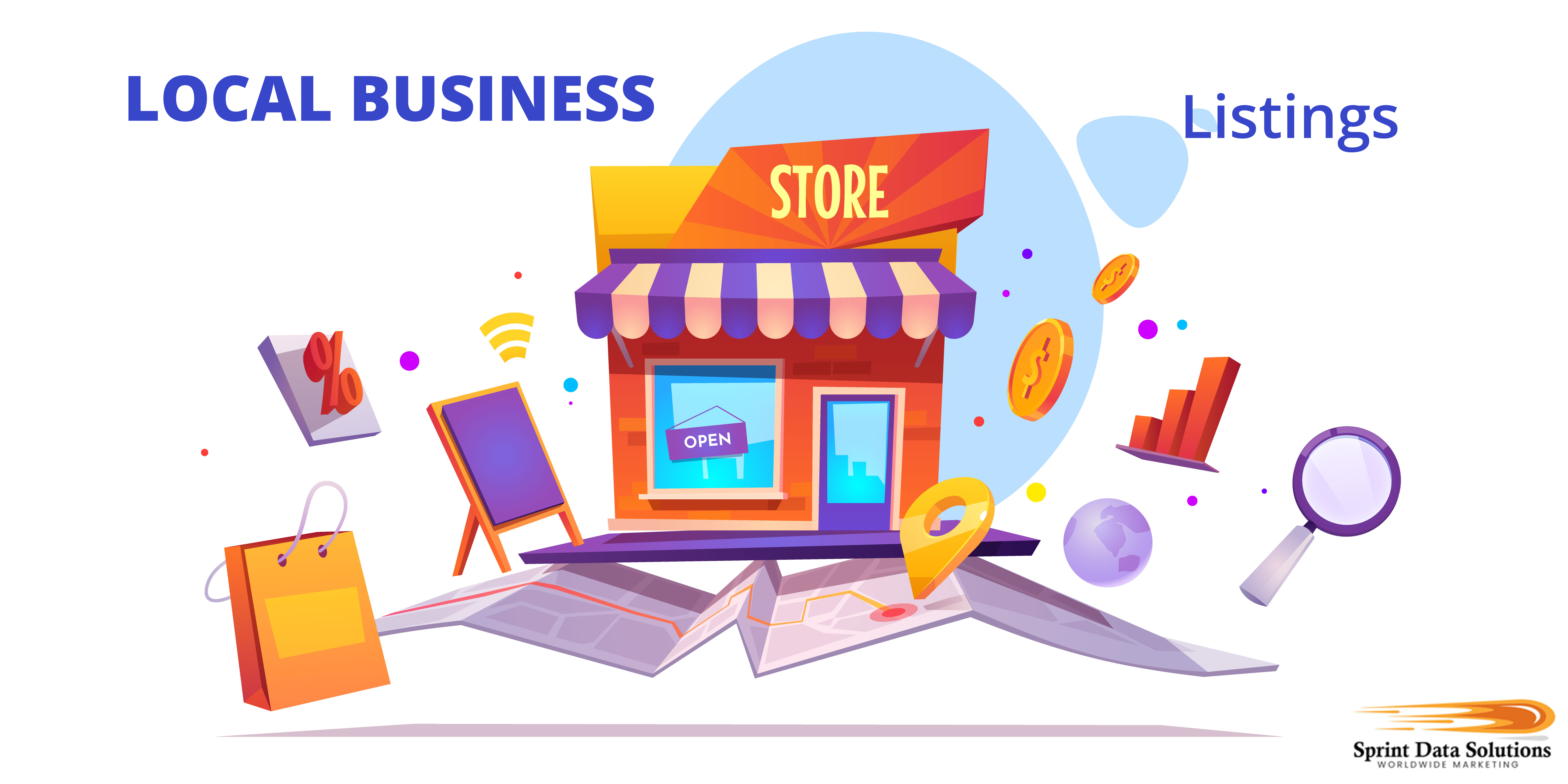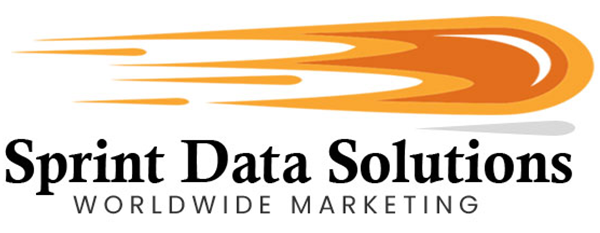The Best Way To Do Business With Other Businesses Is To Know Them
The Business-to-Business (B2B) sector is one of the most profitable yet competitive arenas in modern commerce. Unlike the general consumer market, where emotional appeal, aspirational messaging, and trend-driven content can drive quick decisions and impulse purchases, B2B transactions are rooted in logic, necessity, and strategic outcomes. Every purchase made by a business is expected to contribute directly to operations, enhance efficiency, or generate measurable value.
In the B2B space, credibility and performance carry more weight than brand flair or lifestyle marketing. The reputations of B2B providers are built through long-term relationships, peer recommendations, case studies, and proven results. Businesses purchasing from other businesses expect premium quality, reliability, and a strong return on investment (ROI)—especially since B2B products and services are often more complex, costly, or customized than consumer offerings.
Profit margins can be substantial in B2B because the scale of purchases is often larger, and the value proposition must be justified across departments or organizational goals. However, this also introduces higher barriers to entry. The decision-making process is more structured and can involve multiple stakeholders, including procurement officers, department managers, technical advisors, and financial controllers. Unlike consumer markets, which often allow for spontaneous purchasing decisions, B2B acquisitions go through rigorous vetting and approval cycles.
Another challenge in the B2B market is specificity. Businesses rarely shop for general solutions. Instead, they seek out tailored offerings that align precisely with their operational requirements, compliance needs, and scalability goals. Whether it’s enterprise software, manufacturing components, logistics services, or consulting, the solution must be relevant, efficient, and dependable.
This makes marketing in the B2B world significantly more complex. Crafting a compelling ad or product description is not enough. Successful B2B marketing requires a deep understanding of industry pain points, data-driven targeting, and access to the right contacts within organizations. It’s not just about selling a product—it’s about articulating how that product fits into the buyer’s business model and contributes to their success.

Finding The Right Staff Member
One of the most significant challenges in the Business-to-Business (B2B) sector is identifying and reaching the correct decision-makers within an organization. Unlike consumer markets, where the end-user is typically the buyer, B2B purchases are handled by a select few individuals who have the authority to evaluate and approve new vendors, products, or services. Even within the same company, purchasing authority can shift dramatically depending on the department, organizational structure, and the type of product or service being offered.
For instance, decisions regarding financial services or software solutions may be made by a finance manager, CFO, or procurement officer, while purchases like office furniture, IT equipment, or logistics services may fall under the jurisdiction of facilities managers, IT directors, or operations leads. At larger enterprises, there may be multiple layers of approval, requiring consensus from several departments, whereas in smaller businesses, purchasing authority might rest with a single general manager or owner.
This complexity is further compounded by the lack of transparency in organizational hierarchies. It’s not always obvious who the relevant point of contact is, especially in companies that don’t publicize detailed leadership structures or departmental responsibilities. In many cases, marketers and sales professionals must spend significant time researching company websites, LinkedIn profiles, news articles, or corporate filings just to identify who might hold decision-making power.
In the best-case scenario, diligent research leads to meaningful contact. In the worst-case scenario, marketers reach out to the wrong individual, potentially irritating someone outside the buying chain—such as a junior staffer or executive assistant—and risk being flagged as spam, blacklisted, or dismissed outright. These missteps can damage future opportunities with that company, making precision targeting not just preferable, but essential.
Success in B2B marketing therefore depends on tailored strategies that combine elements of traditional marketing with a deeper understanding of business operations and buyer psychology. Key strategies for effective B2B engagement include:
Research
In B2B marketing, research is the cornerstone of success. While the old saying goes, “knowledge is power,” in the B2B world, knowledge translates directly into profit, efficiency, and competitive advantage. The most effective way to engage other businesses is to thoroughly understand your industry, target companies, and the decision-makers within them.
This means going beyond surface-level information. High-performing marketers investigate company hierarchies, budget cycles, regulatory challenges, and industry-specific needs. They explore pain points, service gaps, and customer behaviors to craft messaging that directly addresses the client’s operational goals. Strong research allows marketers to anticipate objections, speak the client’s language, and present their offer as a tailored solution, not just a sales pitch.
Testing & Optimization
After research has guided your initial strategy, the next step is to test it in the field. There is always a difference between theory and execution. Testing allows you to determine whether your assumptions hold true in real-world conditions. In the best-case scenario, your research-based strategy performs as expected. In other cases, testing reveals challenges or inconsistencies that need to be addressed.
Testing involves experimenting with different campaign elements—such as messaging, delivery channels, timing, and audience segments—to see what resonates most. A/B testing, for example, is a powerful way to compare outcomes between variations. This phase is essential for eliminating weak strategies and reinforcing the ones that deliver measurable results.
Optimization is the natural next step. Based on test outcomes, campaigns are refined to increase performance. Adjustments are made to improve open rates, click-throughs, engagement, or conversions. In the fast-moving B2B space, continuous optimization ensures your approach stays effective and evolves with changing market conditions, keeping your business competitive and relevant.
Specialization
While general consumer marketing often focuses on broad-based messaging to appeal to a wide audience, success in the B2B sector hinges on specialization and precision. Businesses are not looking for one-size-fits-all solutions—they are seeking highly efficient, purpose-built products or services that align directly with their operational needs. This is why B2B marketing thrives in the realm of the niche.
In the B2B space, companies value vendors who understand the unique challenges and technical demands of their industry. Whether it’s compliance software for financial institutions, custom machinery for manufacturers, or niche consulting services for healthcare providers, the more specialized and relevant the offering, the more likely it is to be taken seriously by decision-makers.
Paradoxically, focusing on a narrow niche often leads to broader opportunity. By becoming known as the go-to solution within a specific segment, a business builds credibility and brand authority, attracting not only the primary target audience but also adjacent industries facing similar challenges. This ripple effect can significantly expand a company’s reach and open doors to new markets that may not have been considered initially.
Additionally, niche positioning allows for more personalized messaging, tailored product development, and higher conversion rates. Businesses are more likely to respond to marketing efforts that demonstrate a deep understanding of their specific needs, rather than generic value propositions. For marketers and product developers, this makes niche focus not a limitation, but a competitive advantage.

Referrals
In the world of B2B, relationships and trust are everything. Much like in personal interactions, **word-of-mouth referrals from trusted industry peers** can often open more doors than any advertisement or sales pitch. Businesses frequently rely on recommendations from colleagues, partners, or existing vendors when evaluating new service providers. A strong reputation built on **reliability, integrity, and performance** becomes one of the most powerful marketing assets a company can develop.
This is why exceptional client service, consistent communication, and diligent follow-up are not just good practices—they’re strategic imperatives. When businesses feel well-supported and see measurable value, they are far more likely to recommend that provider to others in their network. Over time, this leads to organic growth through referral pipelines, reducing the need for cold outreach and increasing the efficiency of lead generation. Case studies, client testimonials, and partner endorsements can also amplify this effect, turning satisfied customers into brand advocates.
Today’s Marketing Techniques
The landscape of B2B marketing has evolved dramatically in recent decades, particularly in response to technological shifts and recent global events such as the COVID-19 pandemic. These changes have permanently altered how companies communicate, evaluate vendors, and make purchasing decisions. As a result, marketers must now operate within a **hybrid business environment**—one that blends traditional relationship-building with **digital-first expectations**.
Modern B2B marketing strategies must be multichannel, data-informed, and adaptable. The rise of remote work, virtual meetings, and digital collaboration tools has led to increased reliance on content marketing, video conferencing, social media outreach, and automated lead nurturing systems. Email marketing, webinars, and thought leadership content such as whitepapers or podcasts now play crucial roles in building credibility and engaging prospects over time.
At the same time, buyers are more informed than ever. B2B decision-makers conduct extensive online research before making contact with sales teams. That’s why having a strong digital presence, optimized website, SEO strategy, and value-rich content is essential for building trust and visibility. Marketing automation tools allow for personalized touchpoints at scale, while AI and analytics help optimize campaign performance in real time.
Millennials Are The New Working Age Group
The generational makeup of the global workforce is undergoing a significant shift. The baby boomer generation is now largely in retirement or transitioning out of full-time work, while Generation X, born between 1965 and 1980, currently occupies many of the senior leadership and executive positions within businesses. However, by 2025, the majority of the global workforce will be composed of millennials—individuals born between 1981 and 1996—who are already taking on mid- to senior-level decision-making roles in many industries.
This generational transition carries important implications for marketing, particularly in the B2B sector, where communication must be precise, professional, and personally relevant. Crafting age-appropriate messaging is critical to successfully engaging key decision-makers. Marketing that leans too heavily on nostalgia or cultural references not shared by the intended audience can fall flat—or worse, seem out of touch.
For instance, while it may seem harmless to use imagery or references from the 1950s or 60s, such cues may fail to resonate with Generation X leaders who spent their formative years in the late 70s and 80s. Similarly, invoking 80s television or early 90s tech in messaging aimed at millennials may miss the mark, as many of them grew up in the digital-first, post-Y2K environment of the 2000s and early 2010s. What’s nostalgic for one generation might be unfamiliar—or even irrelevant—to another.

Longer Buying Cycles Are The Norm
In the wake of the global pandemic and the ongoing economic uncertainty that followed, many businesses have been forced to tighten their budgets and reassess their spending habits. One of the most noticeable shifts in the B2B landscape has been the lengthening of buying cycles. Purchases that were once made on a quarterly or bi-monthly basis have now become annual decisions, as companies seek to preserve cash flow and make each investment count.
This change means that B2B marketing must adapt to longer consideration periods and more cautious procurement processes. Buyers are now more strategic than ever, looking for products or services that deliver long-term value, resilience, and reliability. Solutions that previously may have been attractive for their short-term impact are now being scrutinized through the lens of cost-efficiency over time.
To remain competitive, B2B marketers need to emphasize total cost of ownership, return on investment (ROI), scalability, and long-term benefits in their messaging. Highlighting how a product reduces future maintenance costs, enhances operational efficiency, or extends usability over a multi-year period can be far more compelling than focusing on short-term savings or features. Case studies that show sustained performance and client retention over several years will also resonate more deeply in this climate.
Additionally, vendors who offer flexibility in payment terms, bundled services, extended warranties, or loyalty programs will stand out to businesses looking to stretch their budgets. Offering value-based pricing models, usage-based billing, or scalable service tiers can provide additional reassurance that the partnership can evolve with the client’s needs and economic conditions.
Talk To The Right People
Once again, it cannot be overstated—identifying the correct decision-maker is one of the most critical components of a successful B2B marketing strategy. Regardless of how compelling your product or service may be, your efforts will fall flat if your message doesn’t reach the individual who has the authority—and the interest—to act on it. Whether you are gradually building rapport through lower-level employees or leveraging the expertise of a professional marketing firm, your campaign should not proceed until you have accurately pinpointed the right person or role within the target organization.
In today’s business environment, decision-making is often distributed across multiple roles depending on the department, purchase type, and company size. A technology solution may require the approval of the IT director and CFO, while a marketing service may go through a chief marketing officer or brand manager. Without clear insights into a company’s internal structure, marketing campaigns risk being ignored, misrouted, or, worse, damaging your credibility with the business by appearing unfocused or misaligned.
That’s why pre-campaign research is essential. Use professional networks like LinkedIn, review company press releases and leadership bios, and leverage tools that provide organizational charts and job role data. For highly targeted outreach, invest in B2B data platforms or work with firms that specialize in supplying verified contact lists that include names, titles, departments, and direct lines or email addresses of key stakeholders.
Sending marketing materials to the wrong contact not only wastes time and resources but can also damage your reputation, especially if your offer is perceived as irrelevant or intrusive. By contrast, engaging the right person with the right message at the right time builds trust, opens conversations, and greatly improves conversion rates.
We Can Help
Sprint Data Solutions Worldwide Marketing specializes in helping companies connect with the right businesses based on specific needs, interests, and industry demands. Founded in Las Vegas, Nevada, the company began its journey in the traditional direct mail marketing sector, where it quickly built a reputation for high-quality, results-driven solutions. Early success led to the development of an extensive, accurate contact list—one that served a wide variety of marketing campaigns across multiple industries.
As demand grew, so did the company’s footprint. Sprint Data Solutions expanded beyond Nevada, offering services across the entire continental United States, followed by full coverage of Alaska and Hawaii. Eventually, the company broadened its reach to serve all of North America, including Canada and Mexico, and later extended its services to businesses targeting audiences in Europe, providing access to markets in countries such as the United Kingdom, Germany, and France.
Over the years, Sprint has built and maintained a robust and continually updated database of business and consumer contacts. But the company’s strength lies not just in the size of its lists—it’s in the precision and freshness of the data. As marketing has evolved into a digital-first environment, Sprint Data Solutions has remained ahead of the curve, providing access to multiple channels of communication. In addition to physical mailing addresses, clients benefit from a full suite of contact information, including business and personal email addresses, direct-dial phone numbers, and cellular contacts for SMS/text campaigns.
Find The Right Client For You
One of the most persistent challenges in B2B marketing is ensuring that outreach efforts are directed at the right decision-maker. Too often, valuable time and resources are lost navigating complex corporate hierarchies in an effort to identify the appropriate contact for a specific product or service. Reaching someone without purchasing authority not only wastes effort but can also delay or derail potential business opportunities.
Sprint Data Solutions Worldwide Marketing simplifies this process with a highly refined and diverse database of business contacts. More than just providing company names and addresses, our listings include specific decision-maker information—complete with names, job titles, email addresses, and direct phone numbers. Whether you’re targeting purchasing managers, department heads, C-suite executives, or operational supervisors, Sprint ensures your message reaches the individual best positioned to evaluate and act on your offering.
What sets Sprint apart is its commitment to precision targeting through robust segmentation. Every business contact record can be filtered and categorized by industry, company size, revenue tier, geographic location, and job function. This makes it easy to tailor campaigns to fit niche needs. For example, if your products or services are best suited for retail businesses in the food and beverage sector, we’ll provide contacts specifically within that space. If your focus is on heavy industry, logistics, or energy sectors like petroleum or manufacturing, our system can isolate and deliver contacts most relevant to those areas.
Contact data is also available in multiple formats to support a variety of marketing channels. For traditional outreach, you’ll receive accurate physical mailing addresses ideal for direct mail campaigns. For digital efforts, our listings include verified business email addresses and direct-dial phone numbers, including mobile contacts where SMS or voice outreach is preferred. This ensures your team has the tools to connect through the most effective medium.
Whether you’re launching a national campaign or targeting a specific sector, Sprint Data Solutions Worldwide Marketing helps you cut through the noise and connect with key decision-makers. Our data-driven approach eliminates guesswork, increases efficiency, and positions your business for meaningful engagement and higher conversion rates.
Ready to take your B2B marketing to the next level? Contact Sprint Data Solutions Worldwide Marketing and discover how precision-targeted outreach can help you achieve your business goals.






